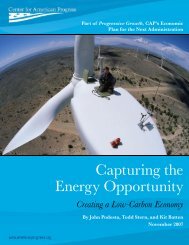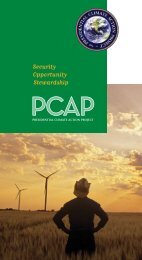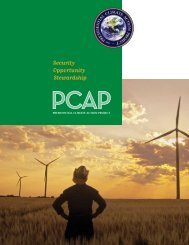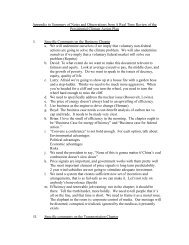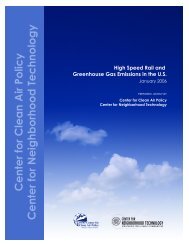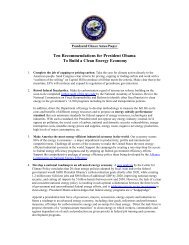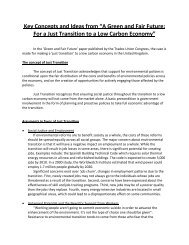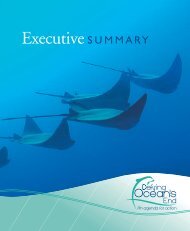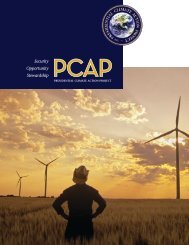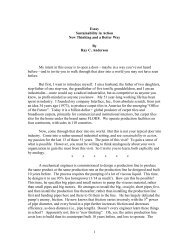The 2011 Plan - Presidential Climate Action Project
The 2011 Plan - Presidential Climate Action Project
The 2011 Plan - Presidential Climate Action Project
You also want an ePaper? Increase the reach of your titles
YUMPU automatically turns print PDFs into web optimized ePapers that Google loves.
OCEAN ECOSYSTEMS AND COASTAL COMMUNITIESOn June 12, 2009, President Obama created an Interagency Ocean Policy Task Force thathas recommended steps to “enhance national stewardship of the ocean, coasts and GreatLakes and promote the long term conservation and use of these resources.” On July 19, 2010,the President signed an executive order that directed federal agencies to implement the TaskForce’s final recommendations. Among other things, the Task Force called for a “NationalPolicy for the Stewardship of the Ocean, Coasts and Great Lakes” and a National OceanCouncil for stronger and more coordinated governance of ocean resources.While praising this progress, some of the experts consulted by PCAP say much more needs to be done “on theground”. In 2008, PCAP proposed 16 executive actions by the President and 16 actions by Congress on oceansand ocean policy. 68 Many of the recommendations remain important but not yet implemented. Here is ashort list:1. IMPROVE THE LAND-BASED PRACTICES THAT ADVERSELY AFFECT OCEANS.Government, industry, and all citizen/consumers should practice better management of land-basedactivities that result in ocean degradation. Point- and non-point pollutants such as nitrogen fertilizers;urban sewage and storm water; animal and industrial wastes; and soil erosion from farming operations,construction sites, and other land disturbances all contribute to degradation of ocean and coastal ecosystems.So does the removal of vegetation that filters water entering rivers and streams. Wastes ranging from plasticsof all types to pharmaceutical chemicals flushed down toilets are found in ocean waters. We recommendthat the Administration:pharmaceuticals and microbial pathogens) and to fully enforce existing regulations that directlyor indirectly protect ocean health;campaign to improve public education and awareness about the various ways our activities onland impact the oceans;relevant federal agencies and programs, educate watershed communities about natural systemsand inexpensive measures to prevent pollution that eventually makes its way to oceans. Examplesinclude reforestation in watersheds, conservation and restoration of wetlands, and permeablesurfaces to reduce storm water runoff in urban areas.2. CREATE A SINGLE CABINET-LEVEL LEAD OCEANS AGENCY (A DEPARTMENT OF THE OCEANS) TOBETTER CHART AND COORDINATE FEDERAL ACTION ON OCEAN AND COASTAL ISSUES.Ocean experts advising PCAP believe a dedicated cabinet-level agency is necessary to more effectivelyimplement national policies and programs related to the health of oceans and coastal areas. <strong>The</strong> currentNational Ocean Council consists of representatives of nearly 30 federal agencies, illustrating how oceanpolicy is scattered across the federal government. A Department of the Oceans – in effect a “NASA of theoceans” – would combine elements of many of these agencies. As an initial step, the Administrationcould ask Congress to designate NOAA as the federal government’s lead ocean agency until a Departmentof Oceans is established and organized.68 See http://www.climateactionproject.com/docs/pcap/Chapter_13_Oceans_11_13_08.pdf34



